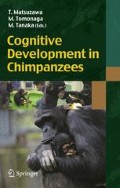Access this chapter
Tax calculation will be finalised at checkout
Purchases are for personal use only
Preview
Unable to display preview. Download preview PDF.
References
Adams DB, Schoel WM (1982) A statistical analysis of the social behavior of the male stump-tail macaque (Macaca arctoides). Am J Primatol 2:249–273
Anderson JR, Gallup GG Jr (1999) Self-recognition in primates: past and future challenges. In: Haug M, Whalen RE (eds) Animal models of human emotion and cognition. American Psychological Association, Washington, DC, pp 175–194
Anderson JR, Meno P (2003) Psychological influences on yawning in children. Curr Psychol Lett: Behav Brain Cogn 11. See http://cpl.revues.org/document390.html.
Anderson JR, Myowa-Yamakoshi M, Matsuzawa T (2004) Contagious yawning in chimpanzees. Proc R Soc Lond B (Suppl) 271:S468–S470
Baenninger R (1987) Some comparative aspects of yawning in Betta splendens, Homo sapiens, Panthera leo, and Papio sphinx. J Comp Psychol 101:349–354
Byrne R (1995) The thinking ape: evolutionary origins of intelligence. Oxford University Press, Oxford
Byrne RW, Whiten A (1992) Cognitive evolution in primates: evidence from tactical deception. Man 27:609–627
Darwin C (1965/1872) The expression of the emotions in man and animals. University of Chicago Press, Chicago
Deputte BL (1994) Ethological study of yawning in primates. I. Quantitative analysis and study of causation in two species of Old World monkeys (Cercocebus albigena and Macaca fascicularis). Ethology 98:221–245
de Waal F (1996) Good natured: the origins of right and wrong in humans. Harvard University Press, Cambridge, MA
de Waal FBM, Aureli F (1997) Conflict resolution and distress alleviation in monkeys and apes. Ann N Y Acad Sci 807:317–328
Gallup GG Jr (1970) Chimpanzees: self-recognition. Science 167:86–87
Gallup GG Jr (1982) Self-awareness and the emergence of mind in primates. Am J Primatol 2:237–248
Gallup GG Jr (1998) Can animals empathize? Yes. Sci Am 9:65–75
Goodall J (1968) The behaviour of free-living chimpanzees in the Gombe Stream Reserve. Anim Behav Monogr 1:161–311
Goodall J (1986) The chimpanzees of Gombe: patterns of behavior. Harvard University Press, Cambridge, MA
Hare B, Call J, Agnetta B, Tomasello M (2000) Chimpanzees know what conspecifics do and do not see. Anim Behav 59:771–786
Heyes C (1998) Theory of mind in nonhuman primates. Behav Brain Sci 21:101–134
Hirata S, Matsuzawa T (2001) Tactics to obtain a hidden food item in chimpanzee pairs (Pan troglodytes). Anim Cogn 4:285–295
Itakura S, Tanaka M (1998) Use of experimenter-given cues during object-choice tasks by chimpanzees (Pan troglodytes), an orangutan (Pongo pygmaeus), and human infants (Homo sapiens). J Comp Psychol 112:119–126
Itakura S, Agnetta B, Hare B, Tomasello M (1999) Chimpanzees use human and conspecific social cues to locate hidden food. Dev Sci 2:448–456
Lehmann HE (1979) Yawning: a homeostatic reflex and its psychological significance. Bull Menninger Clin 43:123–136
Matsuzawa T (2000) Chimpanzee mind 1995–2000: collection of articles. Research report by the grant-in-aid from the Ministry of Education, Culture, Sports, Science and Technology, Japan
Matsuzawa T (2001) Primate origins of human cognition and behavior. Springer, Tokyo
Matsuzawa T (2003) The Ai project: historical and ecological contexts. Anim Cogn 6:199–211
Matsuzawa T (2005) Chimpanzee mind 2000–2005: collection of articles. Research report by the grant-in-aid from the Ministry of Education, Culture, Sports, Science and Technology, Japan
McKenzie AA (1994) The tonsillar evacuation hypothesis of yawning behaviour. S Afr J Sci 90:64–66
Menzel EW (1974) A group of chimpanzees in a 1-acre field: leadership and communication. In: Schrier AM, Stollnitz F (eds) Behavior of nonhuman primates. Academic Press, New York, pp 83–153
Morimura N, Matsuzawa T (2001) Memory of movies by chimpanzees (Pan troglodytes). J Comp Psychol 115:152–158
O’Connell SM (1995) Empathy in chimpanzees: evidence for theory of mind? Primates 36:397–410
Platek SM, Critton SR, Myers TE, Gallup GG Jr (2003) Contagious yawning: the role of self-awareness and mental state attribution. Cogn Brain Res 17:223–237
Platek SM, Mohamed FB, Gallup GG Jr (2005) Contagious yawning and the brain. Cogn Brain Res 23:448–452
Povinelli DJ (1998) Can animals empathize? Maybe not. Sci Am 9:65–75
Povinelli DJ, Vonk J (2003) Chimpanzees minds: suspiciously human? Trends Cogn Sci 7:157–160
Povinelli DJ, Nelson KE, Boysen ST (1990) Inferences about guessing and knowing by chimpanzees (Pan troglodytes). J Comp Psychol 104:203–210
Premack D, Woodruff G (1978) Does the chimpanzee have a theory of mind? Behav Brain Sci 1:515–526
Preston SD, de Waal FBM (2002) Empathy: Its ultimate and proximate bases. Behav Brain Sci 25:1–72
Provine RR (1986) Yawning as a stereotyped action pattern and releasing stimulus. Ethology 72:448–455
Schürmann M, Hesse MD, Stephan KE, Saarela M, Zilles K, Hari R, Fink GR (2005) Yearning to yawn: the neural basis of contagious yawning. Neuroimage 24:1260–1264
Smith EO (1999) Yawning: an evolutionary perspective. Hum Evol 14:191–198
Tomasello M, Call J, Hare B (2003) Chimpanzees understand psychological states: the question is which ones and to what extent. Trends Cogn Sci 7:153–156
Author information
Authors and Affiliations
Editor information
Editors and Affiliations
Rights and permissions
Copyright information
© 2006 Springer-Verlag Tokyo
About this chapter
Cite this chapter
Anderson, J.R., Matsuzawa, T. (2006). Yawning: An Opening into Empathy?. In: Matsuzawa, T., Tomonaga, M., Tanaka, M. (eds) Cognitive Development in Chimpanzees. Springer, Tokyo. https://doi.org/10.1007/4-431-30248-4_15
Download citation
DOI: https://doi.org/10.1007/4-431-30248-4_15
Publisher Name: Springer, Tokyo
Print ISBN: 978-4-431-30246-9
Online ISBN: 978-4-431-30248-3
eBook Packages: Biomedical and Life SciencesBiomedical and Life Sciences (R0)

